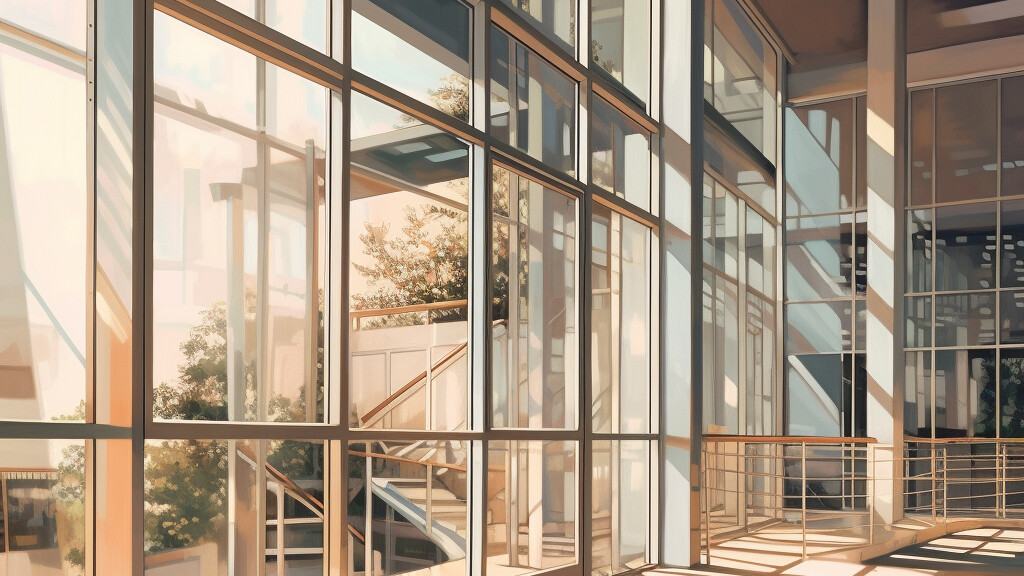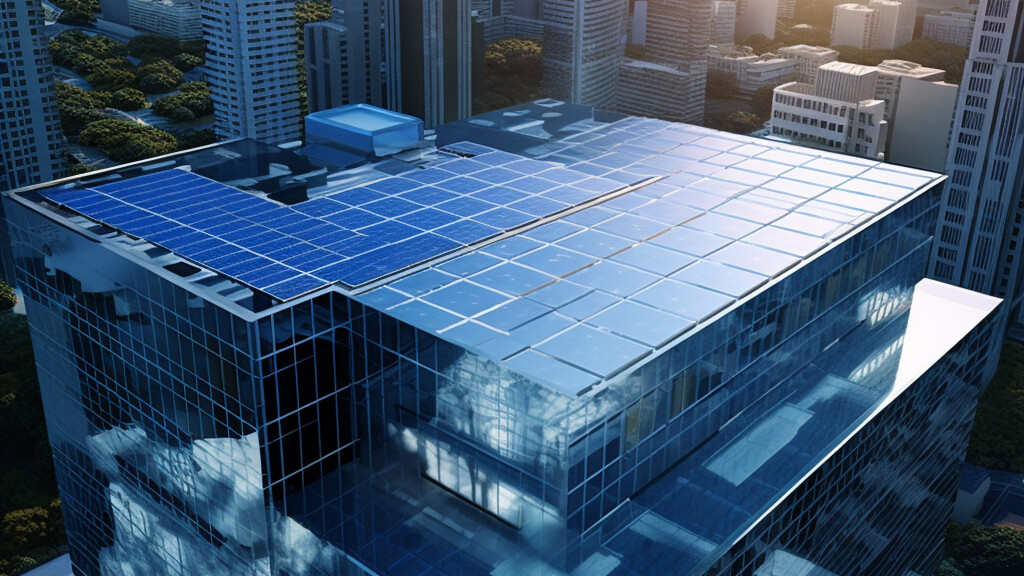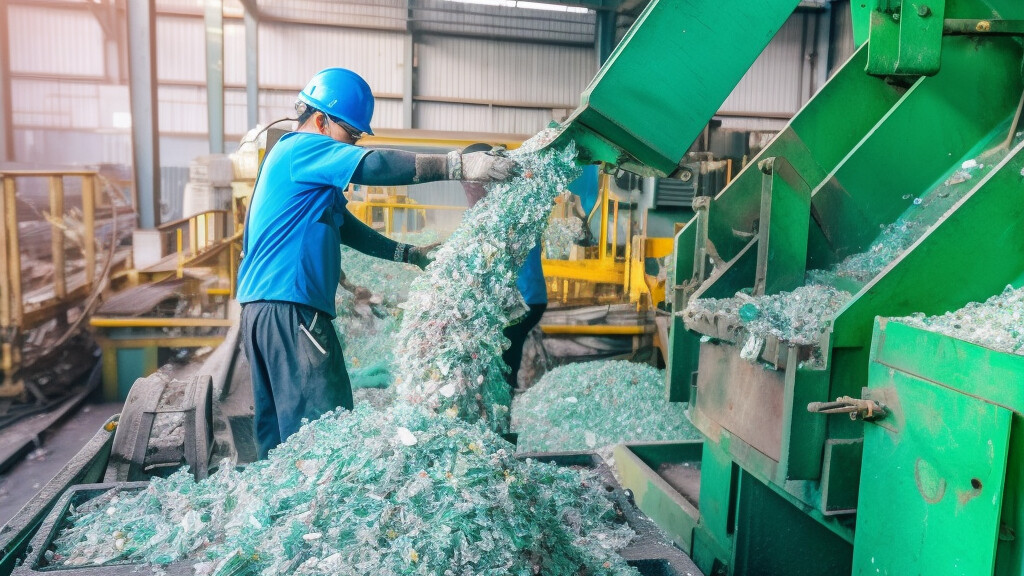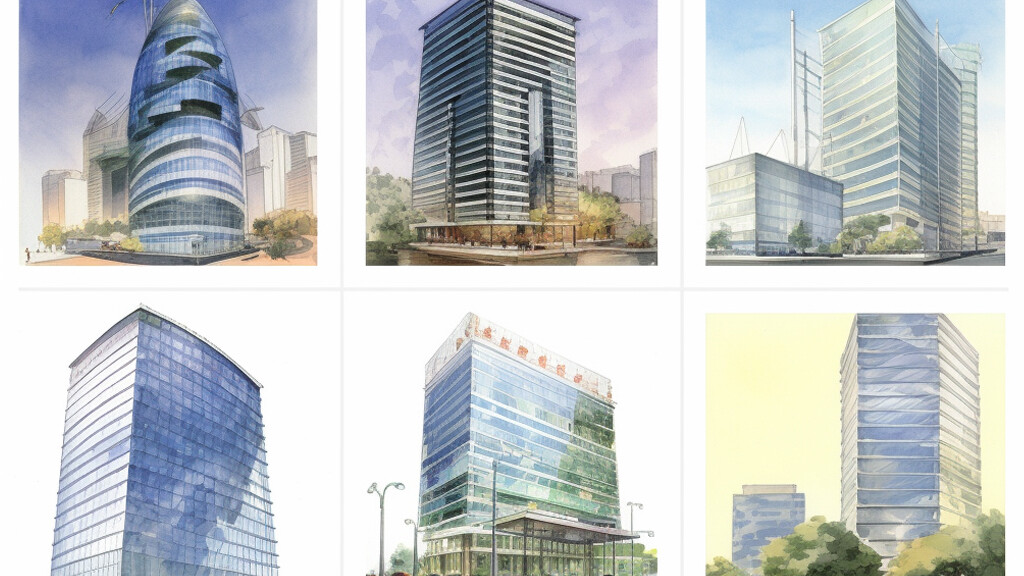
Eco-Architecture: glass as an Environmentally Friendly Material
Glass not only brings aesthetic benefits but also has many advantages that positively impact our environment.
The first advantage of glass is its ability to transmit natural light. By using glass facades and windows, we can maximize the utilization of available sunlight, leading to a reduction in electricity consumption.

This allows us to create energy-efficient interiors that are both environmentally friendly and comfortable for occupants.
Another benefit of using glass is minimizing electricity consumption. Glass facades with high thermal insulation provide effective protection against heat loss during winter and excessive heat gain during summer.
This means that buildings utilizing glass can significantly reduce their energy demand for heating and cooling, contributing to a reduction in carbon dioxide emissions.

Furthermore, glass is also a material that can be easily recycled. Used glass building components can be processed and reused, reducing waste and the need for extracting new raw materials.

There are numerous possibilities for utilizing glass in passive and energy-efficient buildings. Many modern skyscrapers, exhibition pavilions, and cultural centers employ innovative glass solutions that not only captivate with their aesthetics but also contribute to environmental friendliness. These buildings serve as inspiration for the future of architecture, giving us hope for a harmonious symbiosis between humans and nature.

Liquid crystal film for windows also acts as protection against UV radiation and excessive interior heating from infrared IR rays. By controlling the amount of sunlight entering the building, the frosted film helps maintain the appropriate temperature and comfort inside, which in turn translates into cost reduction associated with air conditioning and heating.
The intelligent SONTE window film perfectly aligns with the concept of Eco-Architecture, where innovative technologies are utilized to create environmentally friendly buildings. Its impact on reducing energy consumption, improving energy efficiency, and enhancing user comfort makes it a valuable component of eco-friendly architectural solutions.
Once applied to glass, the frosted film transforms ordinary windows into modern electronically dimmable glass. By adopting such a solution, you can reduce the use of air conditioning and, consequently, decrease your carbon footprint.
In the 21st century, there is no place for outdated solutions. Glass and SONTE frosted film are an innovative combination that replaces ineffective and outdated blinds, curtains, and windows. Glass facades, increasingly chosen by investors for their modern appearance, require unique approaches to remain fully ecological products.
And it is precisely the intelligent SONTE liquid crystal film for windows that embodies such a product!

See more
Unusual spaces
Premium privacy at home, office?
The Covid-19 epidemic has transformed our operations, impacting our outlook on relationships and reshaping the working world.
Innovative house
Glass bathroom – preserving privacy with window film
Can a glass bathroom be both stylish and private? Discover how window film is revolutionising bathroom design. Learn how to elegantly blend glass transparency with discretion, creating a luxurious and comfortable interior. Explore an innovative approach to space arrangement that combines modernity with functionality, and get inspired to create your own private spa at home.
Intelligent solutions
Exploring window films – what makes liquid crystal film superior?
Dive into the world of sun-blocking films, isothermal films, UV protection films, photochromic films, and especially the innovative SONTE liquid crystal film. Discover how the SONTE liquid crystal film combines the advantages of other films, offering unparalleled control over privacy and light in your home or office.